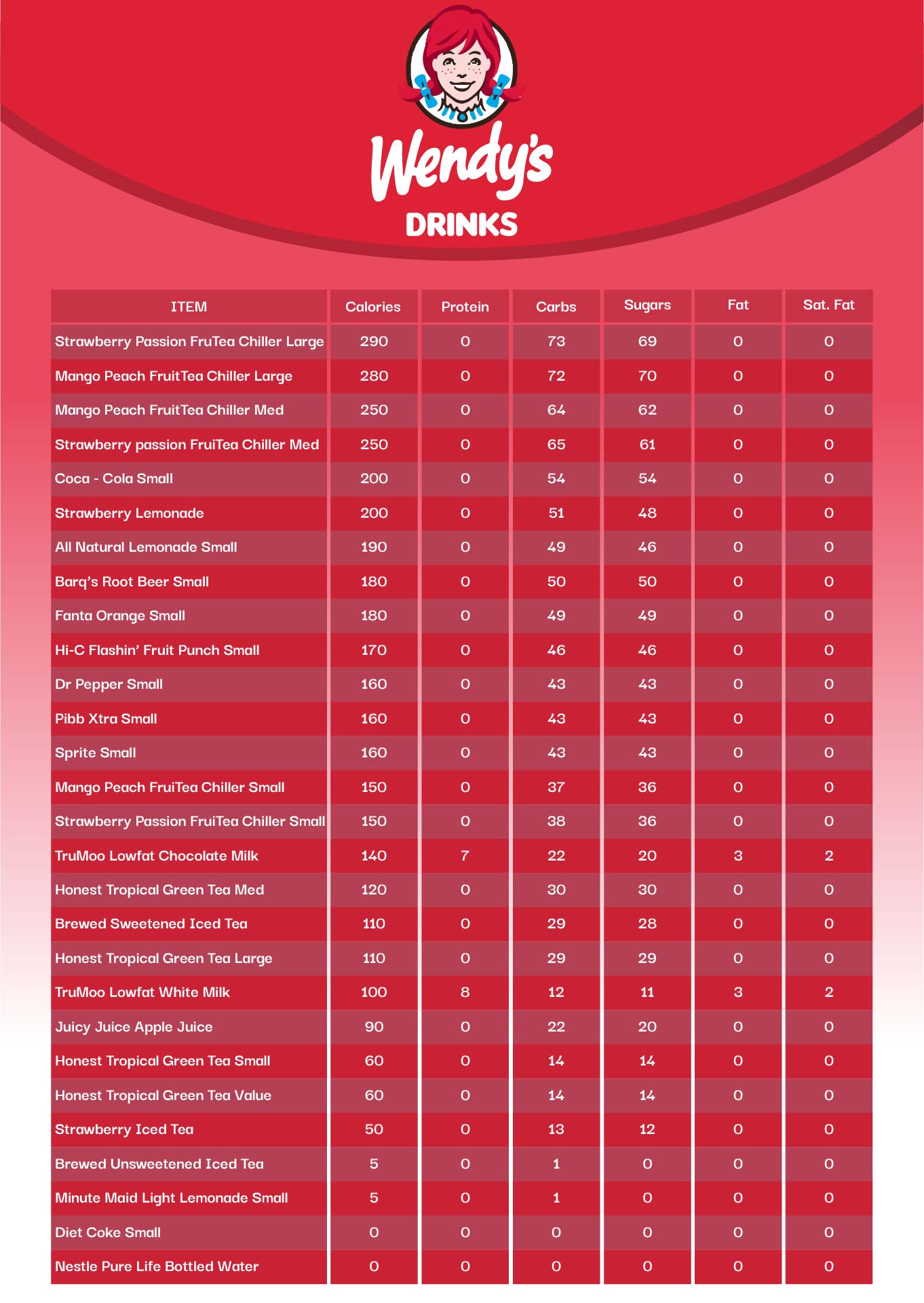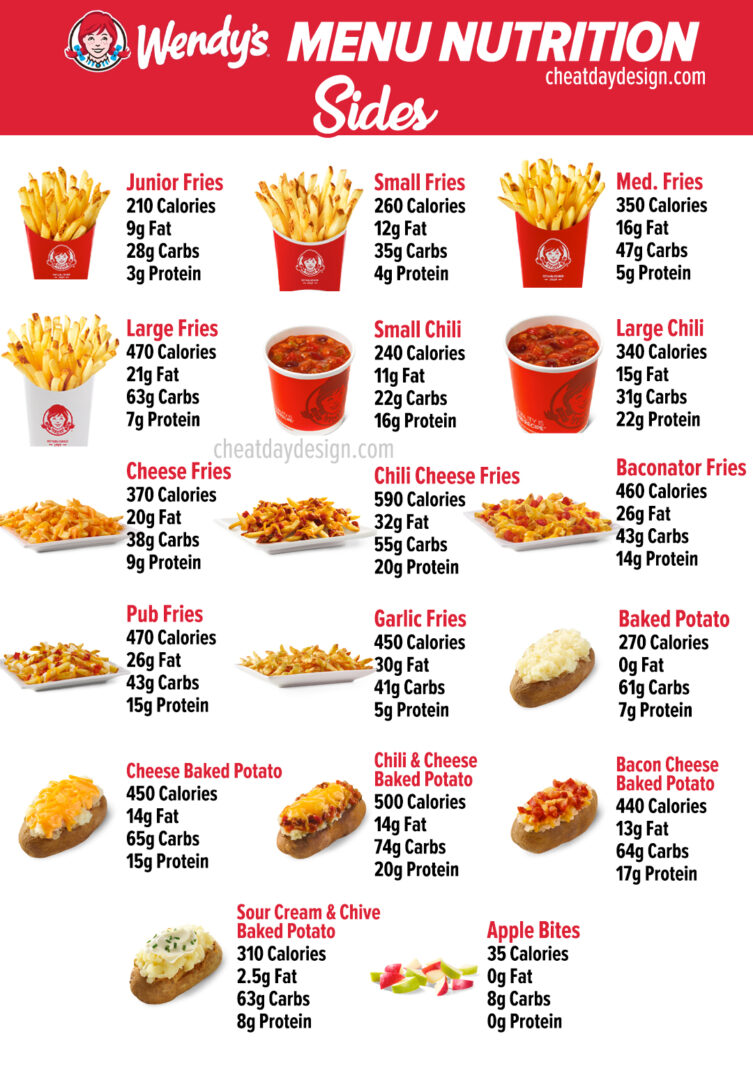Wendy's Nutrition Facts: Calories, Allergens & More!
Can navigating the fast-food landscape truly align with health-conscious choices? The nutritional data for Wendy's, with its comprehensive breakdown of calories, fats, and other vital elements, provides a fascinating insight into how we can make informed decisions about our meals.
Wendy's, a household name in the quick-service restaurant arena, has a long-standing practice of providing detailed nutritional information for its menu items. This commitment allows consumers to make well-informed decisions about their dietary intake, whether they are meticulously tracking macronutrients or simply aiming for a more balanced meal. This commitment helps individuals to make well-informed decisions about their dietary intake. The availability of such data empowers consumers to understand the full scope of their food choices. This empowers consumers to understand the full scope of their food choices.
| Nutrient | Details |
|---|---|
| Energy (kcal) | This metric quantifies the amount of energy a food item provides. It is a crucial consideration for managing calorie intake and maintaining a healthy weight. |
| Fat (g) | This indicates the total fat content in grams. It is broken down further into saturated fat. |
| Saturated Fat (g) | Represents the amount of saturated fat. High intake of saturated fat is often linked to increased cholesterol levels and potential cardiovascular issues. |
| Carbohydrates (g) | Reflects the total carbohydrate content, including sugars and fiber. Carbohydrates are the primary energy source for the body. |
| Sugars (g) | Indicates the amount of sugar present. It is important to note the difference between natural sugars and added sugars. |
| Fibre (g) | This measures the amount of dietary fiber, which is crucial for digestive health and can also help with weight management. |
| Protein (g) | This is the protein content, vital for building and repairing tissues, and providing essential amino acids. |
| Salt (g) | This measures the sodium content of the meal. Excessive sodium intake is associated with high blood pressure. |
| Allergens | Provides information on potential allergens present in the item, including celery, egg, fish, gluten (barley), gluten (rye), milk, mustard, soy, and wheat. |
Source: Wendy's Official Nutrition Information
Wendy's commitment to transparency is evident in its clear identification of major allergens, as defined by the U.S. Food and Drug Administration (FDA). This includes milk, eggs, fish, crustacean shellfish, tree nuts, peanuts, wheat, soybeans, and sesame. This level of detail allows individuals with dietary restrictions or allergies to dine with greater confidence, ensuring they can avoid ingredients that could trigger adverse reactions. Consumers can find detailed information on the Wendy's website and in-store resources.
Each menu item is accompanied by comprehensive nutritional information, which allows consumers to carefully evaluate the impact of each meal. This information includes calories, carbohydrates, sodium content, and the inclusion of Weight Watchers points, which helps people using that program.
The Wendy's menu offers an array of choices, from classic burgers and fries to lighter alternatives such as salads and grilled chicken sandwiches. This variety allows consumers to tailor their meal choices to their specific dietary needs and preferences. A classic chicken sandwich, for instance, can have around 490 calories, with a significant proportion coming from fat and carbohydrates. A grilled chicken sandwich, on the other hand, offers a similar taste profile, but with fewer calories (about 370 calories) and a higher protein content.
The utilization of the Wendy's nutrition calculator allows for a more detailed analysis of your meal selections. By using this tool, individuals can aggregate the nutrition facts of all the items in their order, allowing for a complete and accurate calculation of calorie intake, weight watchers points, and other essential nutritional metrics.
The company's website provides additional avenues for consumers to customize their dining experience. A calorie filter enables users to locate items that fit their dietary needs and preferences. It's worth noting that a general nutritional guideline suggests a daily intake of 2,000 calories; this figure, however, may vary greatly from person to person, depending on individual characteristics, activity level, and overall health goals. Additional nutrition information is available upon request, offering a further layer of detail.
Wendy's has established a commitment to clear and accessible nutritional information for its menu items. This allows customers to create meals that are appropriate for their individual dietary requirements. By offering detailed nutritional data, Wendy's provides a service that empowers its customers to manage their health in a more effective manner.
The nutritional landscape presented by Wendy's showcases a dedication to serving a wide range of tastes and diets. With many healthy choices available, the consumer can make an informed selection of what meals best suit their requirements.
For those looking for a well-balanced meal, the grilled chicken ranch wrap presents a promising choice. Ingredients of this item include chicken breast, water, and a blend of spices, starches, and oils.
The classic chicken sandwich has 490 calories. Carbohydrates and fats make up the majority of these calories. A person would need to run for 43 minutes or walk for 70 minutes to burn off those 490 calories.
The grilled chicken sandwich has 370 calories. These calories are largely derived from carbohydrates and protein. A person would need to run for 32 minutes or walk for 53 minutes to burn these calories.
Wendy's dedication to nutritional transparency is not just a matter of compliance; it's a part of its broader commitment to the customer. The company's openness can help shape consumer expectations and make healthy eating more convenient. Wendy's strives to provide a platform for customers to develop a personalized approach to healthy eating while enjoying their dining experience.
By offering the right resources and knowledge, Wendy's is paving the way for a healthier dining experience. Consumers now have the ability to make informed food choices when ordering at Wendy's. This initiative is a step toward a more health-conscious future in the fast-food sector.
Wendy's commitment to clear communication is further exemplified by its menu's nutritional breakdowns. Customers can easily get a quick overview of nutritional information and can make choices that are consistent with their dietary and health needs. This level of detail empowers customers to manage their well-being, ensuring they can enjoy their meals without compromising their health objectives.
The company's website also features a nutrition calculator and calorie filters, which makes the ordering procedure more customer-friendly and efficient. These resources enable customers to customize their orders, and make decisions that best meet their individual needs. Wendy's is devoted to providing useful resources for customers, and this shows in their commitment to clear and accurate nutrition information.
The menu is a dynamic reflection of nutritional advancements and consumer preferences. The menu is modified to reflect health-focused eating. Wendy's menu includes a wide array of options. The menu is a tribute to the company's dedication to satisfying a wide range of tastes and dietary demands.
Wendy's is an example of how fast food can adapt to the needs of health-conscious consumers. Wendy's is a leader in nutrition and provides customers with the information and resources they need to make smart choices. Wendy's has committed itself to provide a delicious and nutritious dining experience.


